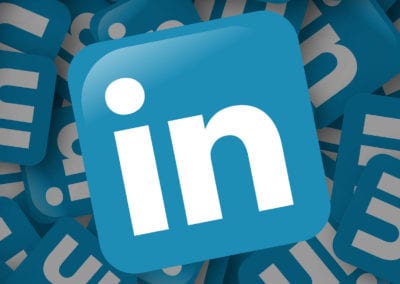You’ve spent weeks diligently scouring company websites and job boards for software developer positions that seem like a great match.
At last, you’ve discovered a few roles that are right up your alley.
So you dust off the old resume and submit applications for each one.
The result?
Zilch.
You realize that it might be time to retire that old resume. If you want to land that interview, you’ll need a fresh, eye-catching resume that sets you apart from the crowd.
In this article, you’ll learn 6 ways to make your resume stand out so you can land the interview and move toward your dream job.
Table of Contents
#1: Get to Know Your Audience
When you find a role that you love, your immediate reaction is probably to apply right away. But first you need to tailor your resume to the position.
Before you make any changes, take a step back and research the company. Find out what industry they’re in, what technology they’re building, and who their customers are. Check out their company page to learn about their core values and mission statement and get a feel for their culture and goals.
If you don’t like what you find, then move along. No reason to apply to a company that’s not a good fit.
But when you find a company that aligns with your interests, reach out to a few employees who work there to request an informational interview.
The easiest way to do this is to look up the company on LinkedIn and glance over the current employees.
Start by searching for employees who have a similar role as the one that you are applying for, since they would likely be your team members. You can also search for people from different departments since they’d provide a well-rounded perspective of the company.
Once you find a few people, connect with them on LinkedIn and send them a message. Here are the main things you’ll want to include in your note:
- Why you’re reaching out: Mention that you came across an open position and would like to chat with someone who works there to learn more about the company.
- Your request: Ask if they’re available for a brief call so you can ask them a few questions and get an inside perspective.
You’ll learn a lot from speaking with a current employee, even for just 15 minutes.
At the end of the call, you can mention that you’ll be applying soon and ask if they’d be willing to mention your name to the hiring manager. Remember that you’re not asking for a recommendation. After all, they barely know you and can’t vouch for you as an employee.
But if they mention your name, it’s far more likely that your resume will be carefully reviewed.
#2: Include This, Not That (Plus a Template!)
Now you’re ready to update your resume. But what should you include?
Here’s the breakdown:
Basic Information.
At the very top of your resume, you’ll want to include your name, email, and phone number. It’s also nice to include your location (city and state are sufficient) since some companies care about you being in a specific region or time zone.
You can also include relevant links such as your LinkedIn profile, technical portfolio, and GitHub profile.
Education.
If you went to a university or college, you’ll want to put that information down.
Here are the essentials:
- Degree Name
- Type of Degree (Associate, Bachelor, etc.)
- University Name
- The year you graduated (this information is nice to have, but optional if you’d rather not include it)
- GPA (Only include this if you recently graduated and received a strong grade point average)
If you haven’t completed a degree, then don’t skip over this section! You’ll want to include information about any coding bootcamps that you’ve graduated from or certifications you’ve completed.
Technical Skills.
If you’ve worked as an engineer for a long time, you likely have a long list of technical skills. So how do you decide what gets onto your resume?
Here are some ways to focus on the most important technologies:
- Only include skills that you feel confident talking about in an interview.
- Cut out technologies that you haven’t worked with in over 10 years.
- Emphasize the skills that are relevant to that specific job since recruiters and hiring managers will quickly notice those keywords.
And since you’ve likely spent more time developing certain skills, it’s worthwhile to organize them by your level of proficiency (for example, you could group them into three stages: Learning, Working Experience, and Highly Proficient).
Experience.
Most hiring managers care more about actual experience than degrees. That makes this section one of the most important parts of your resume.
Here’s what you’ll want to include:
- Your Title
- Company Name
- The dates that you worked there
- A description of your work
Note: If your role was remote, it’s great to include that in parentheses since a lot of hiring managers will want to see that you’ve succeeded in that environment.
As you write out your experiences, focus on how you offered value and made an impact (rather than simply mentioning your tasks and responsibilities). A great way to do this is to include numbers. Incorporate quantifiable outcomes from your work and tangible examples of how you impacted the company. You can also describe what you actually built and what the finished product was.
In short: It should be less about what you did and more about what your work resulted in.
But what should I include if I’ve been a developer for years?
If you’re new to the industry, you’ll probably be able to list all of your professional experience. But as you spend more years as a software engineer, pair things down and focus on your largest accomplishments and most recent experiences.
Pro Tip: If you’ve ever taken a step back from work (whether it’s for maternity leave, health reasons, a sabbatical, etc.) it’s totally fine to leave gaps in your resume. The extra space will allow you to focus on the most relevant experiences. Just be prepared to answer any questions about the time gap, especially if it lasted for a year or more.
Side Projects.
Projects are nice to have but not necessary. If you have experience from volunteering, open-source projects, coding hackathons, or other projects, then it can be nice to include.
There are several reasons to include side projects.
- If you’re a junior developer, you won’t have as much real-life work experience. A robust project section will prove that you have the tangible coding skills needed for the job.
- Working on projects outside of work proves that you’re passionate about what you do.
- If you’re trying to pivot into a new programming language or technology but don’t have work experience with it, you’ll be far more competitive if you’ve used that technology in a side project.
If your resume is already getting quite long, then you can nix this section and simply include your projects on LinkedIn. Most hiring managers or recruiters will view your profile when reviewing your resume and will be able to see your projects there.
Organizations and Volunteering.
This section is rarely needed, however, it’s worth mentioning.
If you are a new graduate, this is a great place to expand on skills that you’ve gained through holding leadership roles at organizations or volunteer projects.
In short, if you have room on your resume and think it will give you a leg up, then it can be worth including.
Resume Template: Need inspiration on how to format and arrange your resume? Here’s a resume template to get you started.

#3: Nail the Length and Format
On average, recruiters only spend 7.4 seconds looking at a resume. That doesn’t leave you with much time to convince them that they should keep reading.
Here are some things to keep in mind when it comes to the length and format. Get these right and your reader will naturally want to keep reading.
- Length: Ideally, you’ll want it to be 1-2 pages. Any longer than that and you’ll lose their attention. If you’ve worked for a long time and can’t squeeze everything in, then focus on the last 8-10 years. For positions that you held more than ten years ago, just include the title, company name, and length of employment.
- Sequence: Order your work history in reverse chronological order, so it’s easy for them to spot your most recent experience.
- Font: Choose a font that’s professional and easy to read. Some of the best options include Arial, Georgia, Times New Roman, Calibri or Helvetica.
- Font Size: You’ll want to vary the font size, based on the section of the resume. Here are some general guidelines: Your name (at the top): 18 to 24 points, Headings: 12 to 16 points, and Body: 10 to 12 points.
- Links: You want it to be easy for the hiring manager or recruiter to check out your professional sites, so make sure all links are hyperlinked correctly.
- Styling: Incorporate bolded text and italics to make certain parts of the text stand out. Instead of writing paragraphs, use bullet points to ensure the text is easy to quickly scan and digest.
- Document Type: A PDF is the best option since it tends to look cleaner and the format converts no matter what device or browser your reader is using.
- Document Title: Make sure you include your first and last name in the document title, so it’s easy for recruiters to find your resume. For example: “FirstName_LastName_Resume.”
Note: Oftentimes a professional, clean design is better than a fancy graphic design unless you’re focused on UI/UX and want to use nice styling because of the kind of work you’re in.
#4: Get Personal
Remember in step #1 when you researched the company and conducted an informational interview with an employee?
All of that helped you learn about the company culture, tech stack, product, and customers.
Now it’s time to take all that knowledge you gained and inject it into your resume.
Companies are often inundated with applications. If your resume isn’t clearly related to the job, it’ll just get tossed. So you need to immediately convince them that you have the skills to succeed in that position.
Here are some things to look for:
- Industry: If you’ve worked in the same industry, then be sure to make that clear. A lot of companies like to see that you already know the lay of the land when it comes to the problems they’re solving and customers they’re helping.
- Company Culture: If their core values align with who you are, then be sure to highlight them throughout your resume. For example, if they value flexibility, you can demonstrate how you wore multiple hats in your previous role. If they value teamwork, provide examples where you’ve contributed to your team’s success.
- Technology: If you’re able to find out what tech stack they’re working with, then you can highlight any technologies or programming languages that you have in common.
Pro Tip: Read over the job description and make note of keywords that seem important. If any of them are relevant to you, then try to sprinkle them into your resume.
#5: Tell Me No Lies
It’s worth noting that all of this effort to stand out doesn’t mean you should lie about your background.
That will only result in you getting exposed during the interview process and looking foolish. Not only would it be a waste of your time, but it would also be a waste of time for everyone who reviewed your application and spent time interviewing you.
If you’re honest about your experience, you’ll have nothing to hide and will be able to confidently tell them why you think you’re the ideal candidate for the job!
But what happens if you come across a job that looks exciting but requires skills that you don’t have?
First off, there’s nothing wrong with applying for a “stretch job.” Most companies are flexible about the requirements listed in a job description. So even if you don’t have everything they’re looking for, it’s still worth applying.
It’s also a great incentive to take courses, get certifications, or work on projects that would help you look more competitive for a role. You’ll end up deepening your skills and will become a much more competitive candidate.
Bonus Read: In this article, Frankie Nicoletti offers advice on how to build your own career path and step into your dream role!
#6: Polish It ‘til It Shines
Now that you’ve written your resume, you’ll want to review it to ensure it’s free of errors.
Remember: your resume is the first glimpse a potential employer gets of you. If it’s clean, organized, and error-free, it will show that you’re detail-oriented and possess strong communication skills.
Here are some steps you can take to edit it:
- Ask someone to review your resume. A fresh pair of eyes will likely catch errors that you missed. If you’re not able to get someone to check it, then at the very least you’ll want to read it out loud to catch any mistakes.
- Use a spell checker. This is one of the easiest ways to ensure your resume is free of spelling or grammatical errors.
- Make it easy on the eye. Incorporate bullet points, format titles in bold, and increase the font size of section headers so it’s easy to scan.
- Review all links. This is a helpful way to ensure none of them are broken. You don’t want a hiring manager to click on your technical portfolio, only to find that it leads to a blank page!
- Read the job description. At this point, you’ve read the job description several times. But it’s worth completing a final read-through as you review your resume, just to ensure the two align.
Pro Tip: Reach out to a recruiter at hatch I.T. to review your resume. These recruiters look at resumes every day and can offer advice on how to improve it. The bonus? They just might know of relevant job opportunities that are a good fit for you.
Start Writing
Crafting the perfect resume isn’t about being a phenomenal writer.
It’s about parsing job descriptions, getting into the minds of hiring managers, and clearly demonstrating why they should interview you.
You now have a roadmap for how to write a resume that will set you apart from the crowd.
So start by researching your dream company to learn about the industry they’re in, the products they make, and the problems they solve. Once you know your audience, it’s time to grab your computer and get busy writing.
Your new job awaits!





